Information about mammoth tooth and tusk
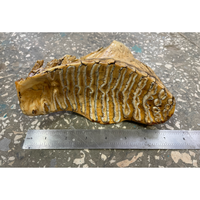
Mammoths used their teeth to grind plant food. Surprisingly, the ancient giants had only 4 molars in their huge jaws. Over their lives, mammoths repeatedly changed teeth – from 4 to 6 times, according to some estimates.
Mammoth teeth consist of enamel and dentin. While the enamel structure is very similar to stone, the dentin is a considerably softer tissue. These two materials alternate with each other shaping something like a grater, where the light protrusions are enamel, and the dark base is dentine.
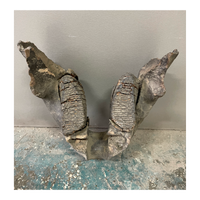
This tooth has been buried in the ground for several thousand years and, thanks to conservation with no exposure to high temperatures and oxygen, it is still well preserved. However, its softer organics were degraded, and the tooth needs to be stabilized and filled with resin. It cannot be effectively used in its original form for crafting.
Let's look at the stabilization process in more detail.
Stabilization involves impregnating the tooth with Cactus Juice resin using cyclic vacuum and overpressure treatment. It takes an average of 4-5 days to complete this step. The process is similar to wood stabilization but it requires more time.
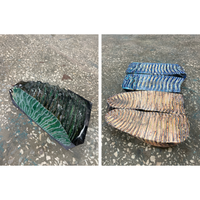
The second step of stabilization is heat treatment when the resin cures and hardens, and the material becomes hard, stops absorbing moisture and is no longer subject to changes due to temperature fluctuations. Adding a dye to the product completely transforms its look. You can choose any color or even make it bicolored!
The next step is to use Alumilite Resin to fill all the voids. After that the tooth will look like this:
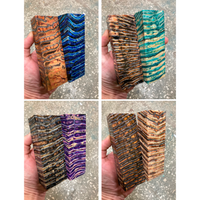
Large diameter mammoth tusks can be cut into blocks and blanks to make knife handles. Smaller diameter tusks are used to make round pieces of various sizes. Large teeth are used to make standard blanks.
The knife handle blocks and blanks made of mammoth tooth look like this:
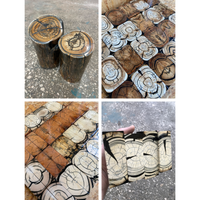
The stabilization of the mammoth tusk is carried out in a similar way. We produce full-size knife handle blanks in the form of blocks or scales from large tusks, while round pieces of various diameters are made from smaller tusks. The sawed fragments have a unique one-of-a-kind structure. Fragments made from a single tooth or tusk can have different shades and structures.
Now you have a more detailed knowledge about the stabilization process. You can have a look at our full product catalog in the «Catalog» section.
